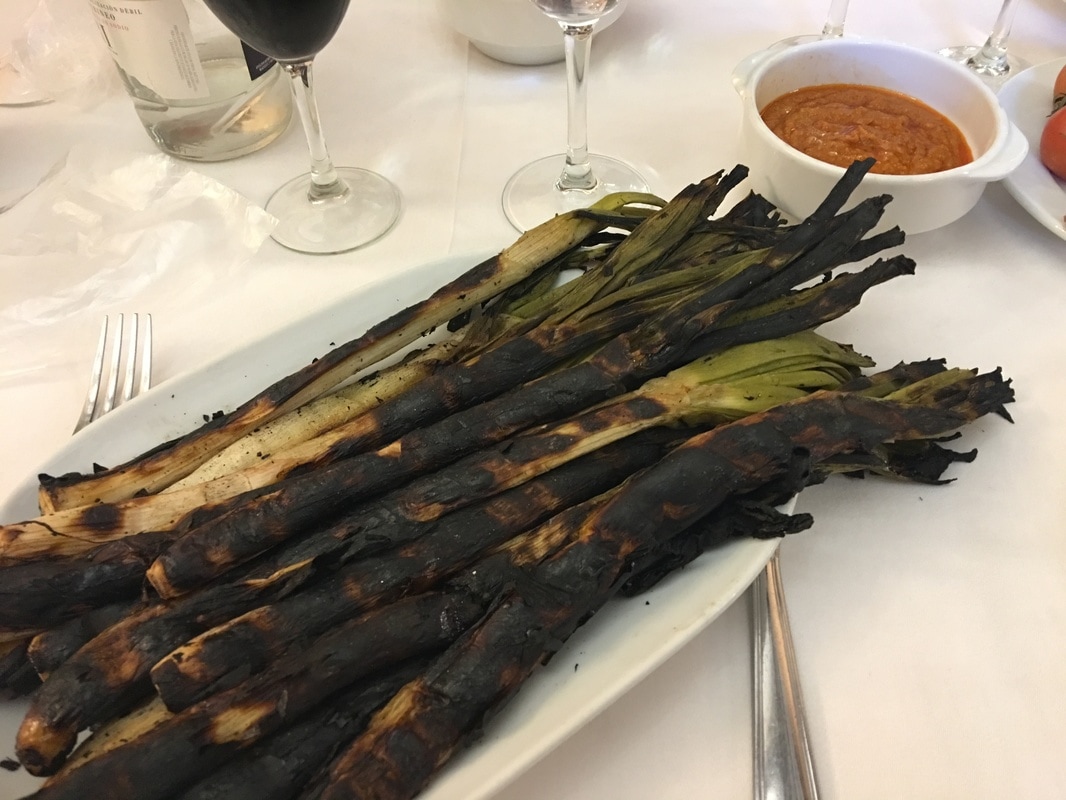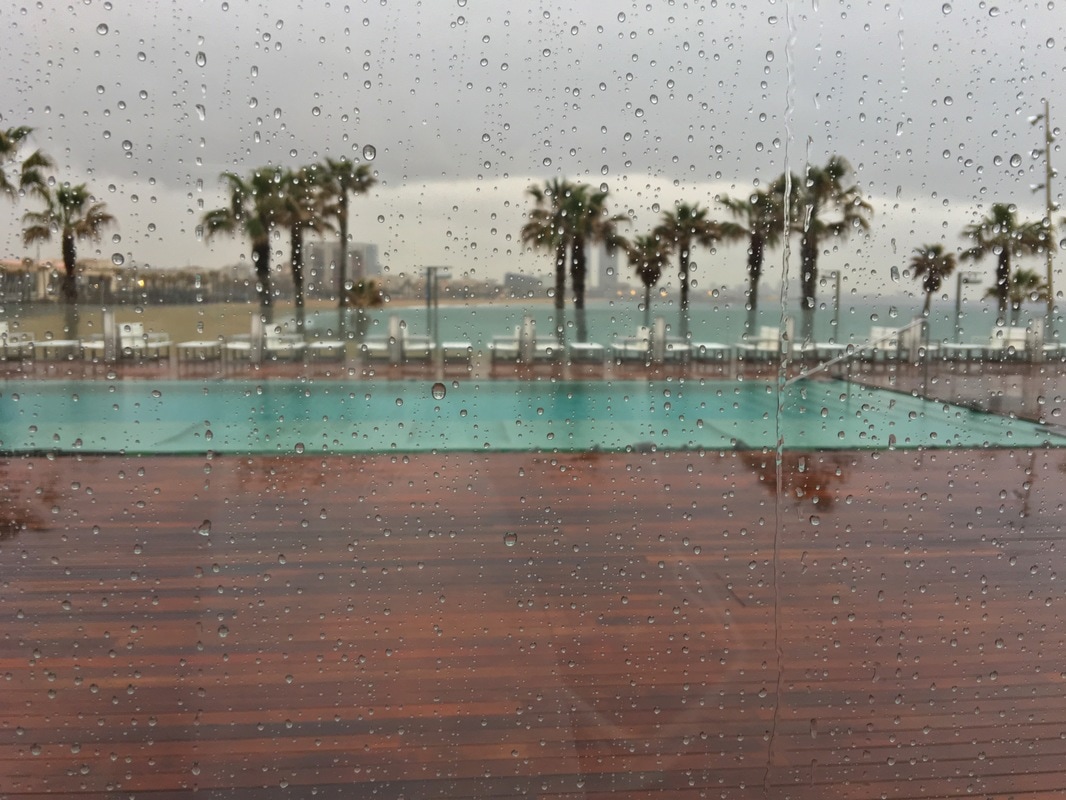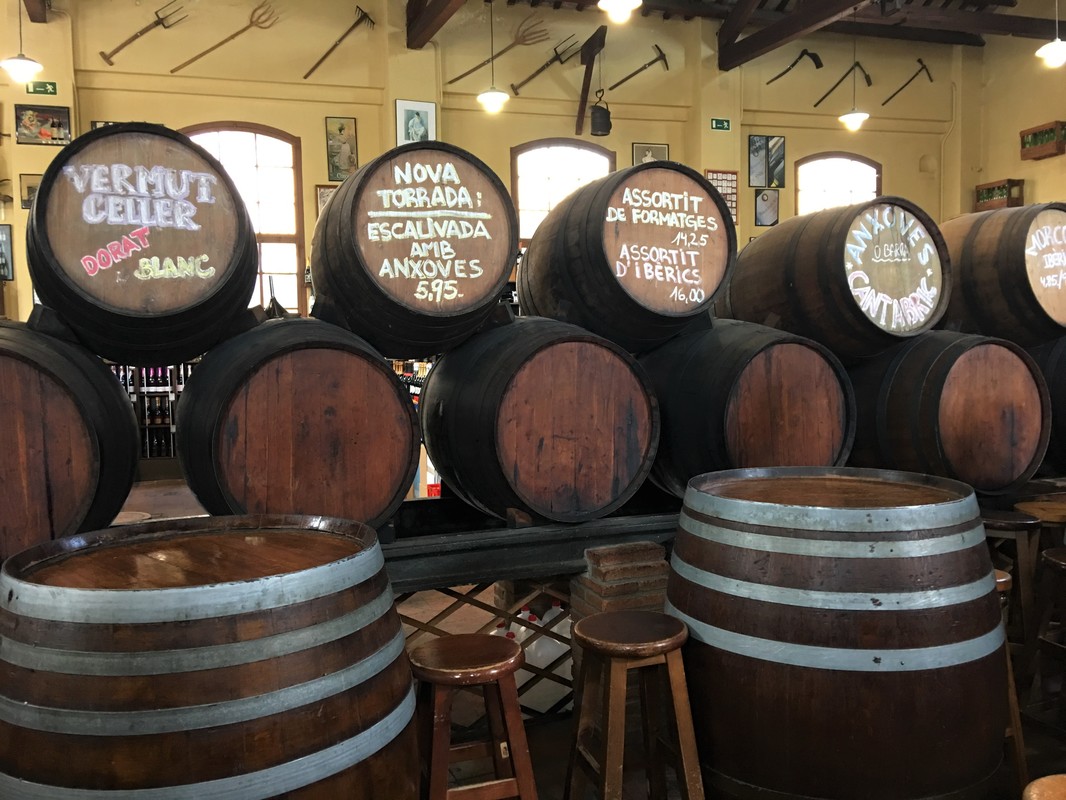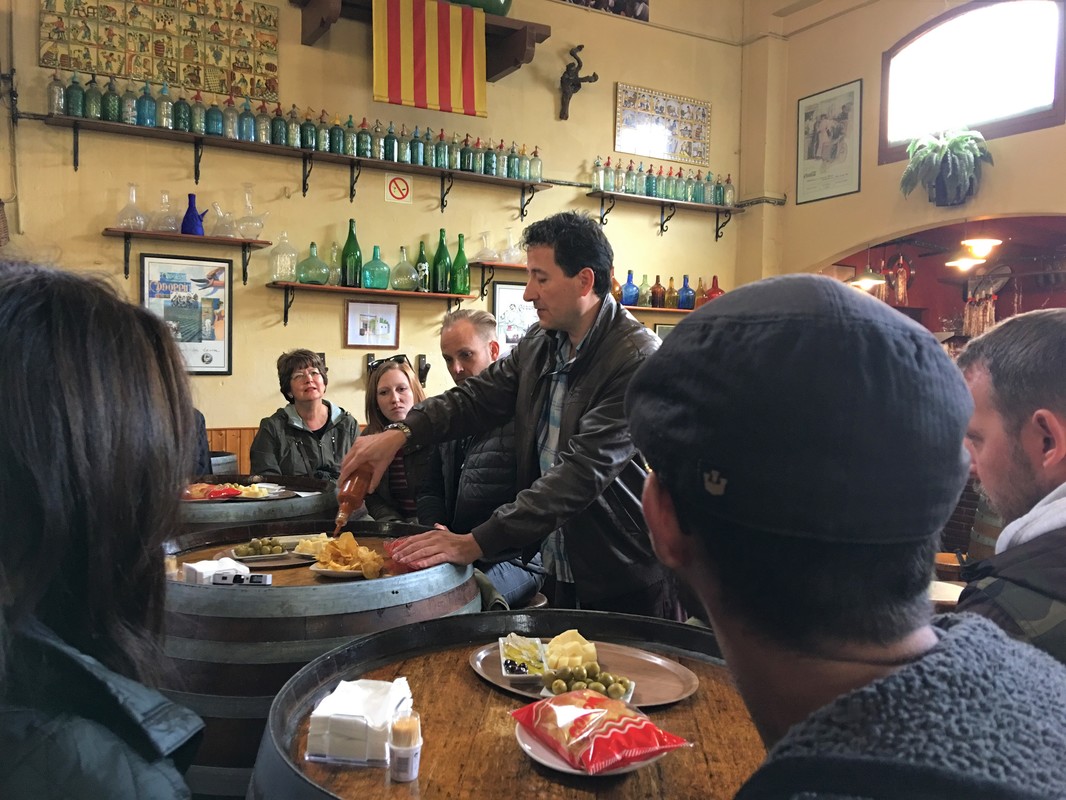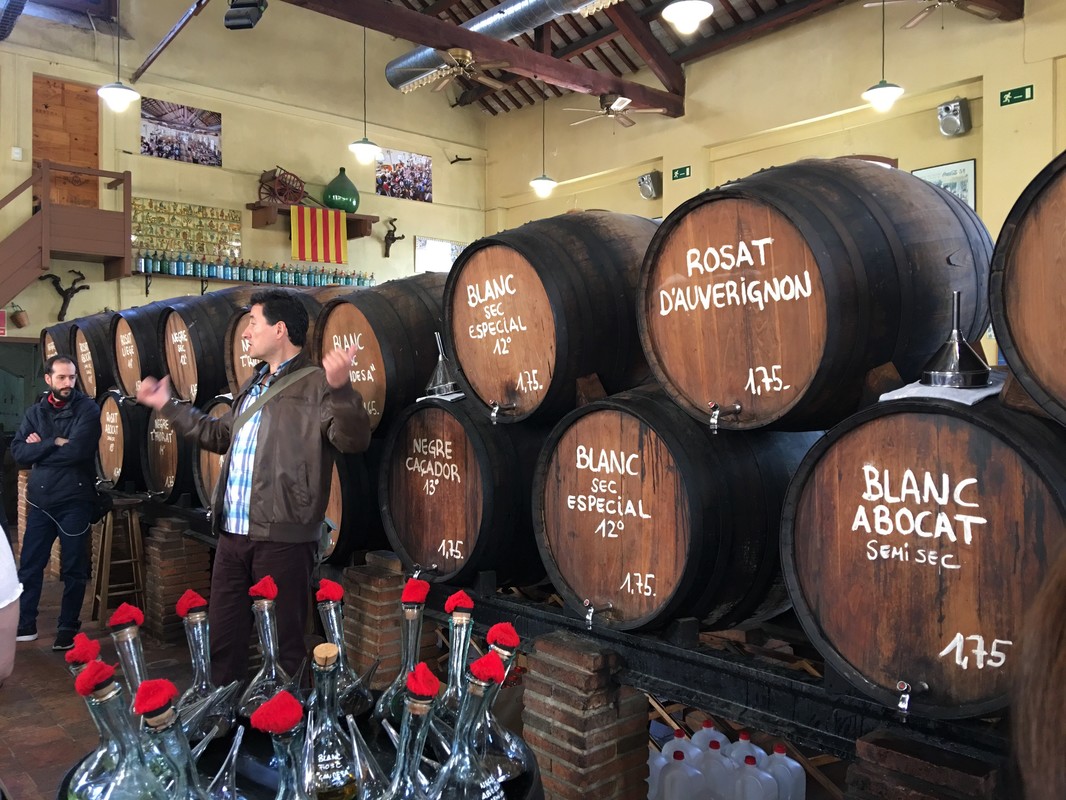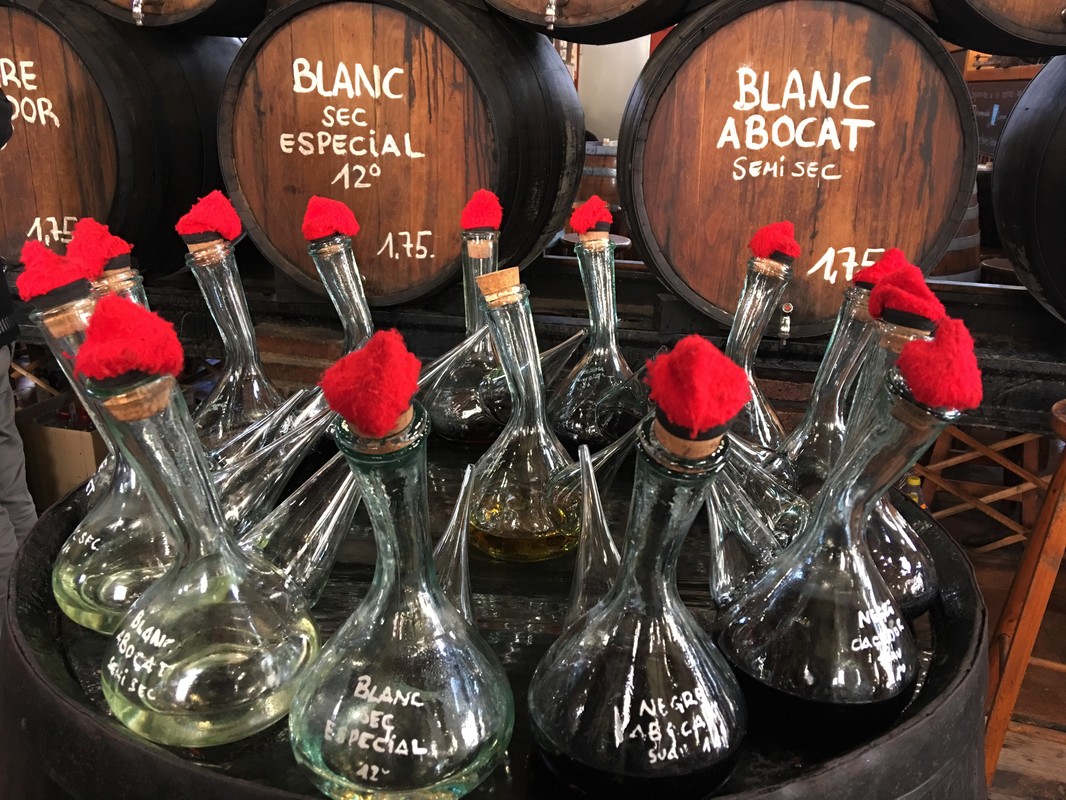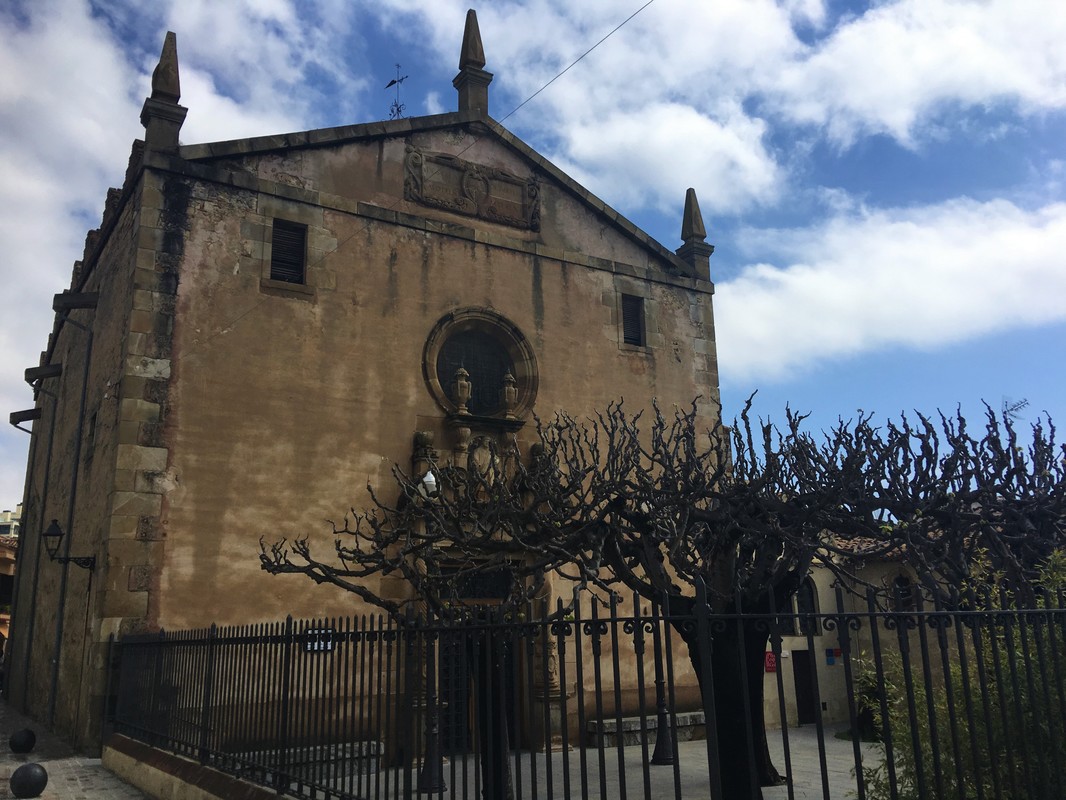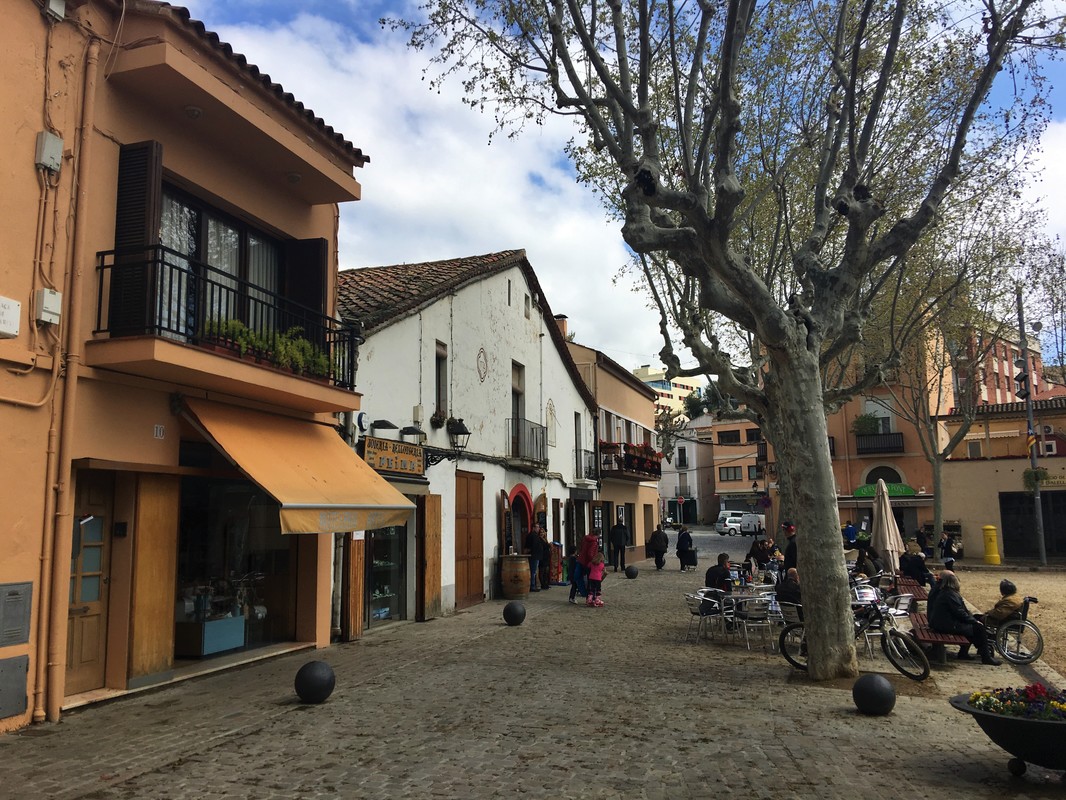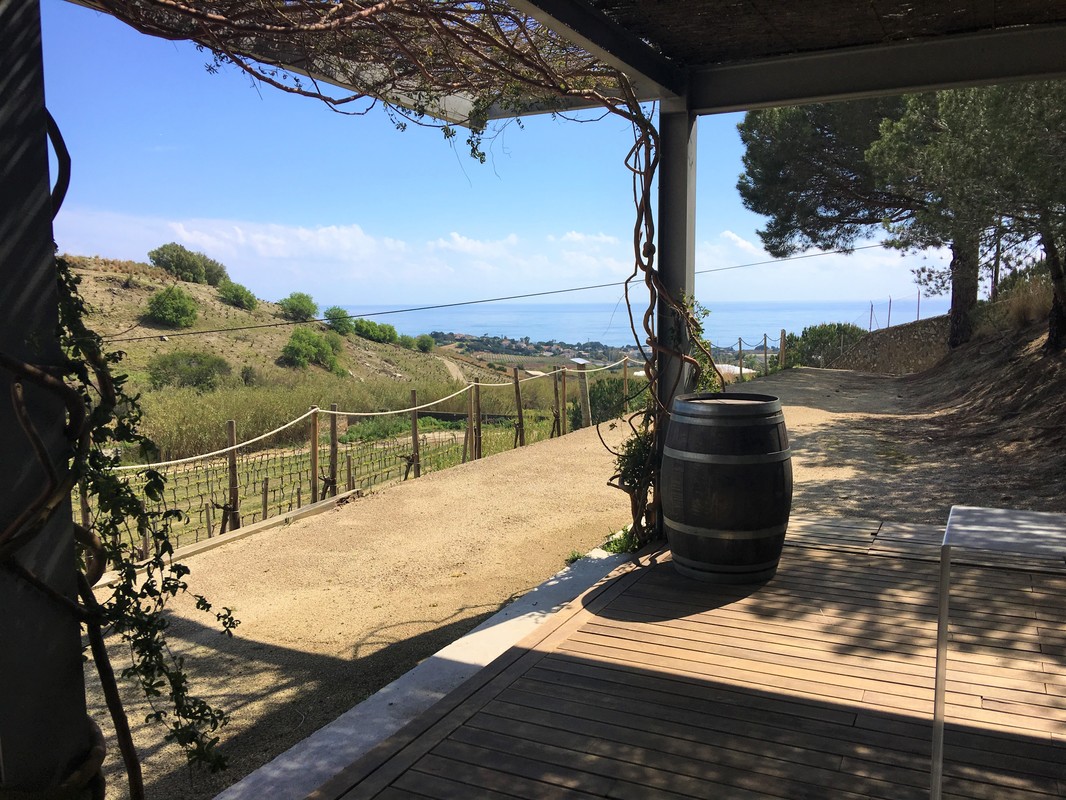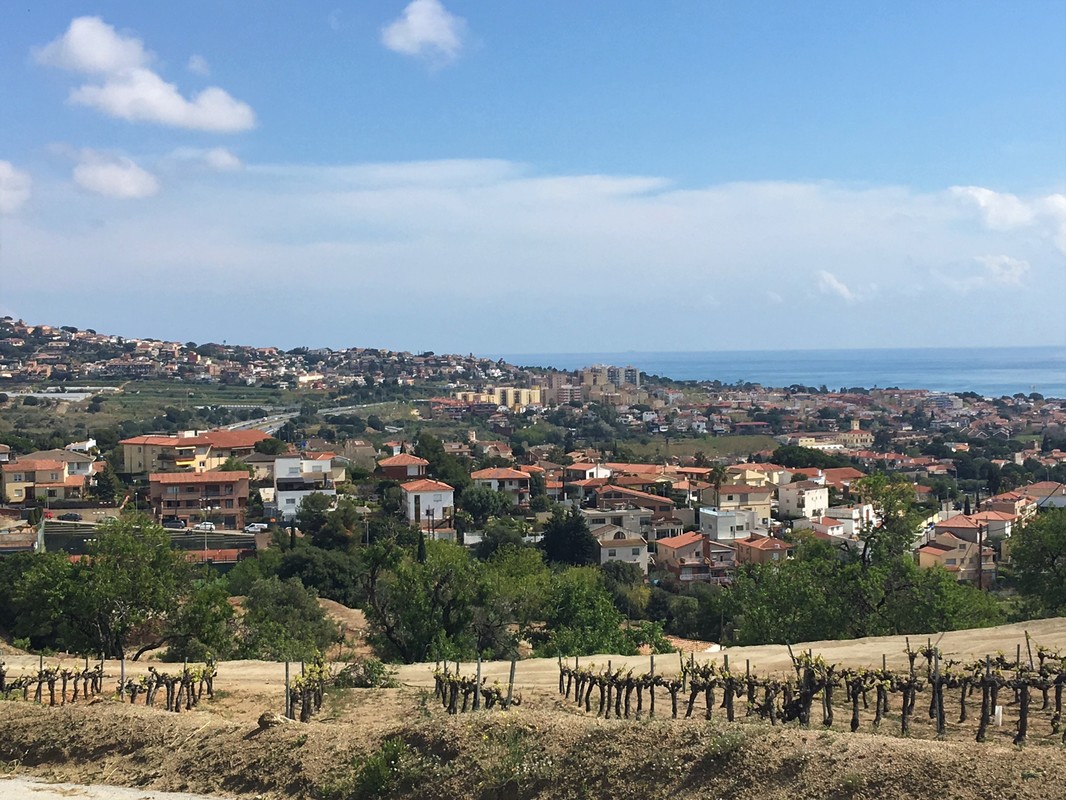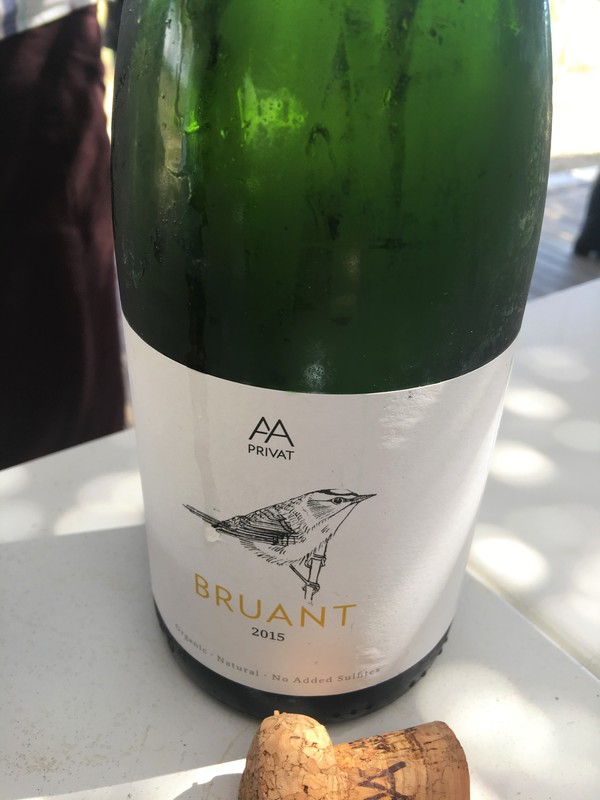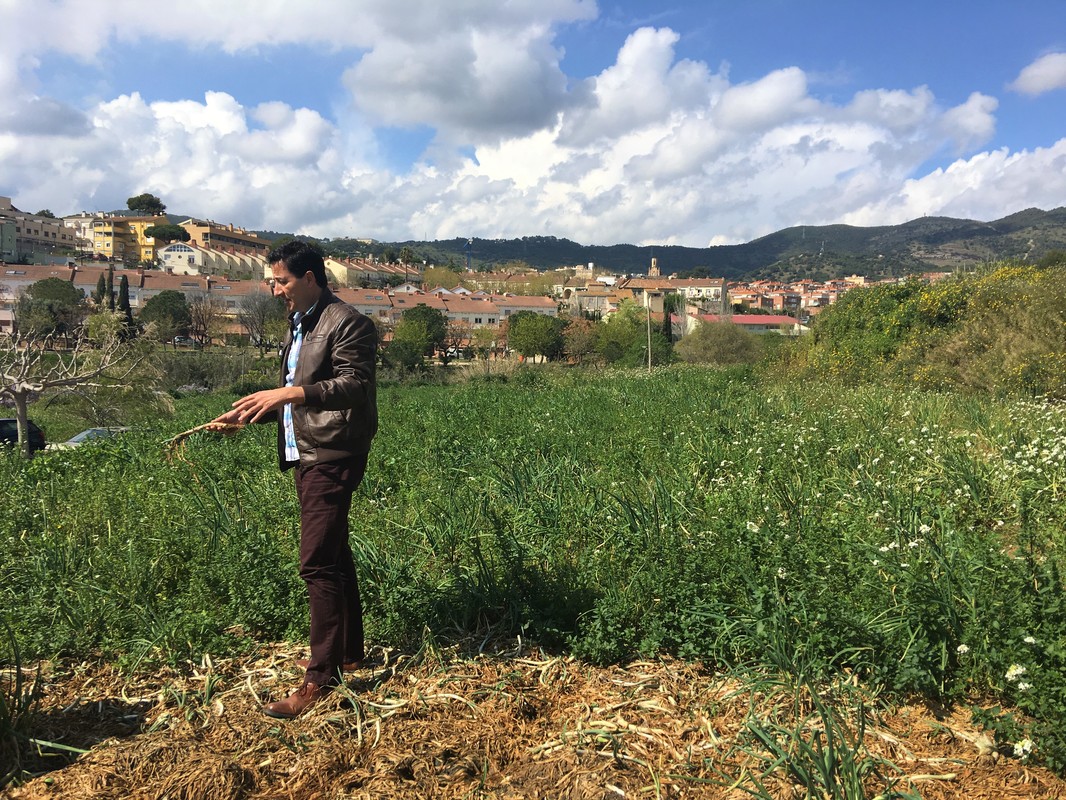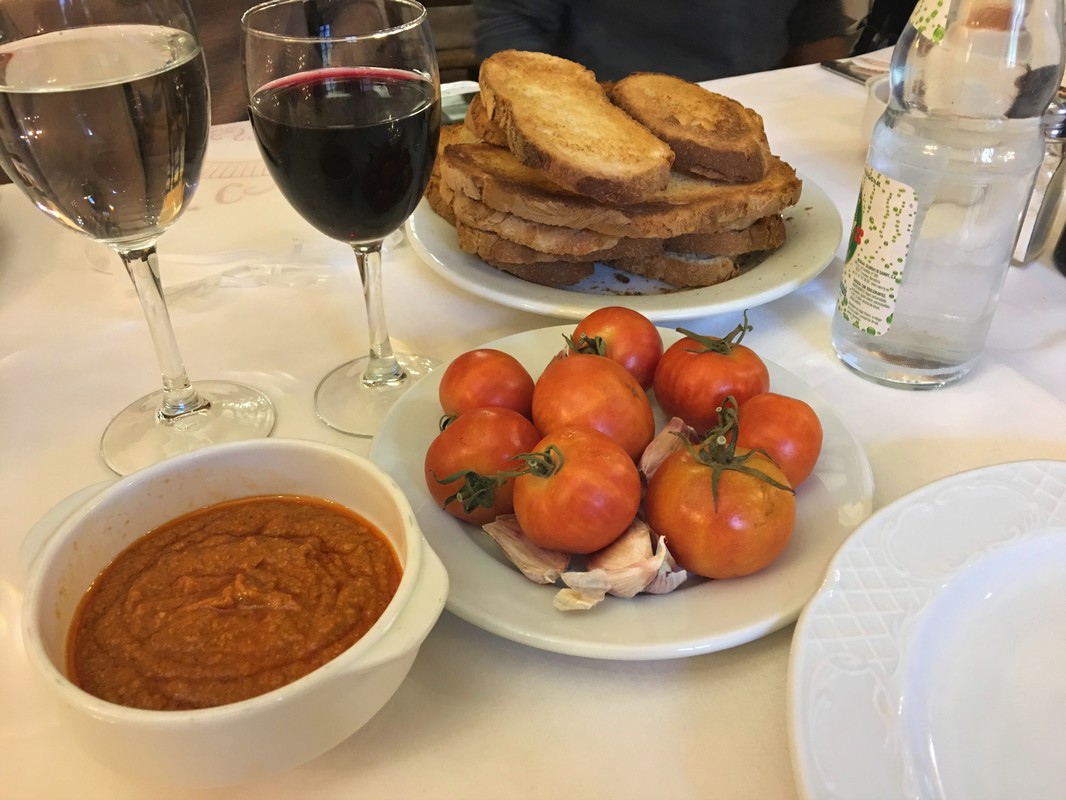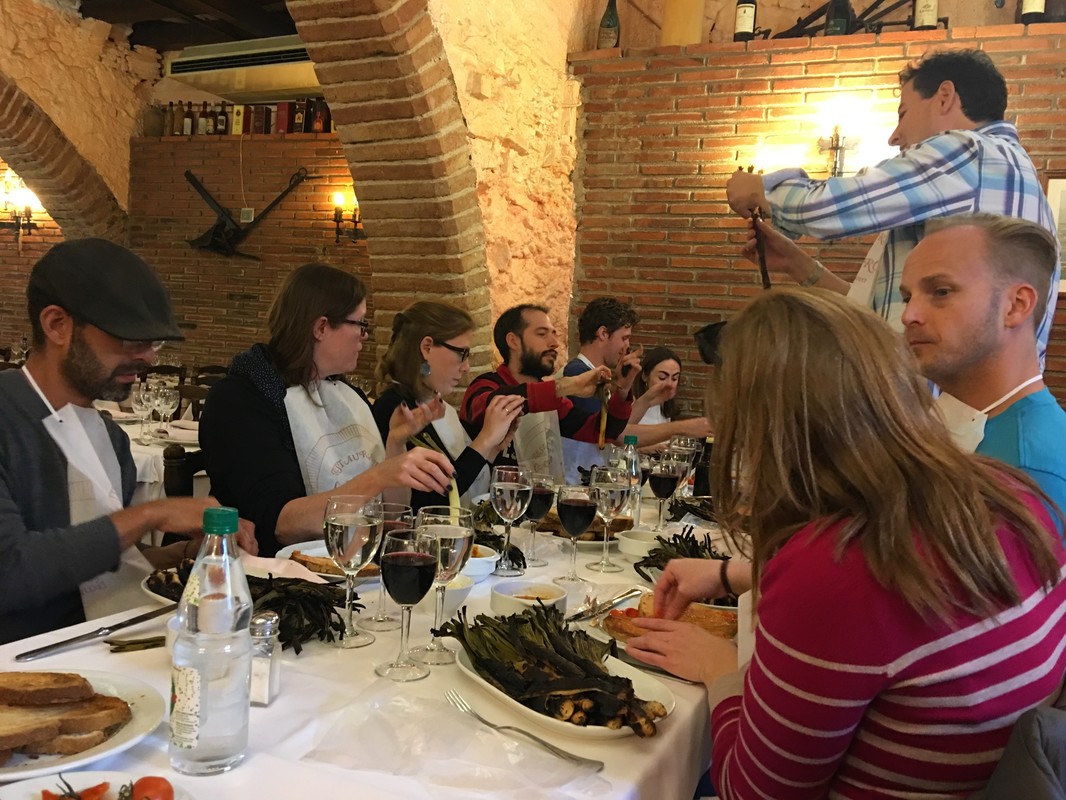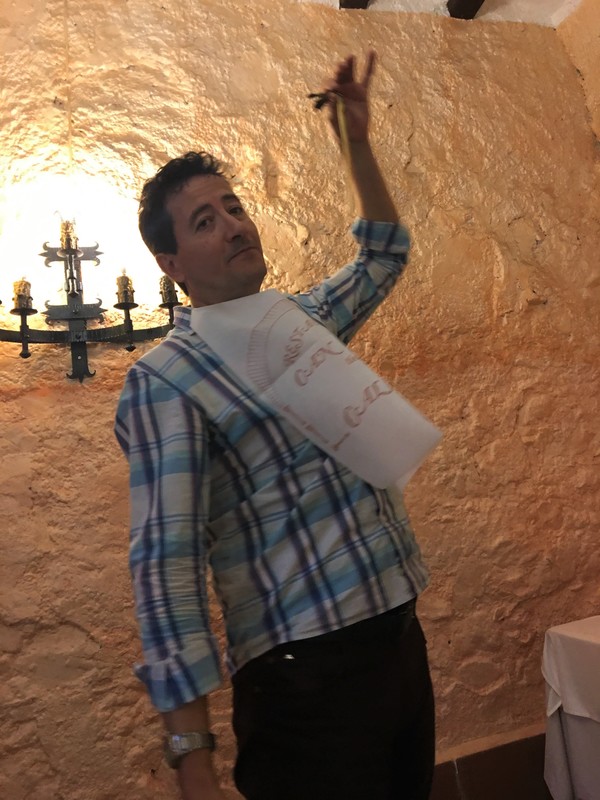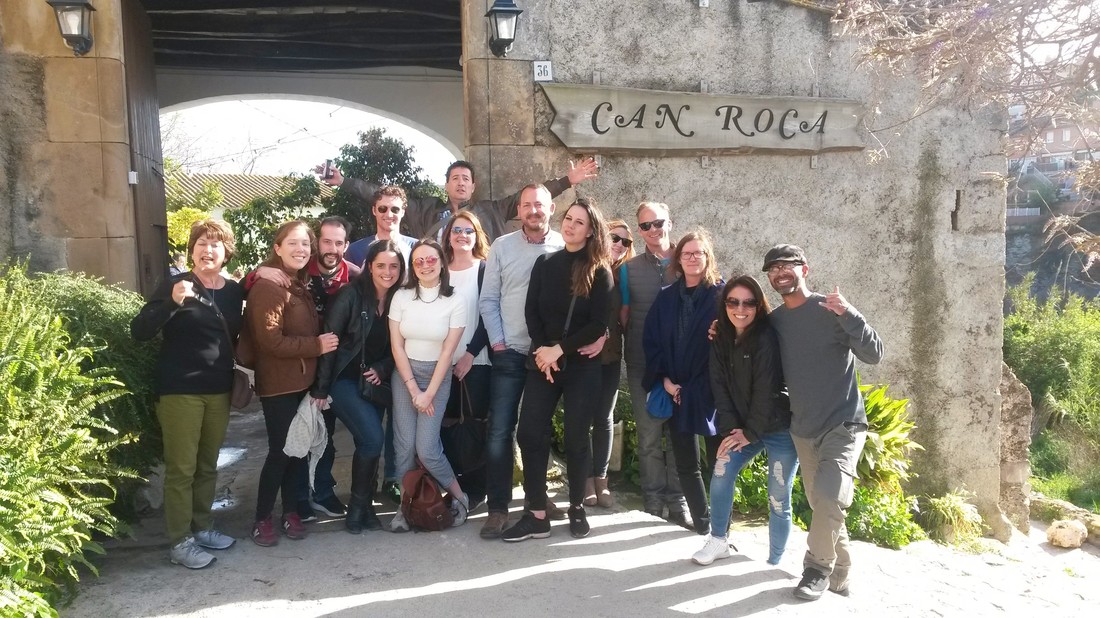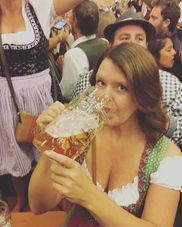|
I'm not sure the picture above does justice to the deliciousness of the calcot feast I experienced in the countryside outside of Barcelona. It was a bucket list item that I'm so glad I can now say I've done. I arrived in Barcelona the day before my scheduled tour to a dreary and rainy day. The one bright spot was the very chatty and knowledgeable cab driver who taught me so much in the short ride from the train station to my hotel. I learned that he was actually baptized at the famous La Sagrada Familia back when they still held baptisms there. Not exactly the sunny beach day I was hoping for After enduring monsoon rains during a night out with Anna, a fellow Tt Madrid graduate, I woke up on Saturday to sunshine and no rain and ready to experience an authentic calcot feast like a local. I met up with Jaume, our guide for the day, and the rest of the group who came from Mexico, England, Hawaii, Germany, NYC, Spain and Wisconsin. I'm a food tour addict and one of the things I love besides learning about the food and customs of a city is meeting people from all over the world. We jumped in the mini bus to head to our first stop of the day while Jaume told us all about the history of Barcelona and Alella, the area outside of Barcelona where we'd be having our calcot feast. Barcelona was founded by the Romans 2,000 years ago who brought with them wine and olives to make olive oil. Catalonia itself is one of 17 autonomous regions in Spain and is fiercely proud of their traditions and culture. We spent most of the day in Alella, which was once a wealthy area that was founded in the 10th century and has numerous manors dating from the 13th-17th centuries. Our "calcotada" later in the day was held in a 17th century manor, which only added to the amazing experience. Our first of many stops that day was at a local bodega to have a snack before lunch...or what is known in Spain as "la hora de vermouth." We snacked on anchovies, cheese, olives and chips covered with a delicious spicy sauce that sadly I forgot the name of while Jaume filled us in on the history and types of vermouth. We then moved on to the shop next door that offered the option of trying numerous types of wine before purchasing. In fact, locals bring their own containers, decide which wine they want from which barrel, and then fill up at a relatively cheap cost. We were able to taste everything from sweet whites to bold reds. Any place with numerous barrels of wine is ok with me Drinking from these porrons is much trickier than it looks...in hindsight, my white shirt may not have been the smartest wardrobe choice After filling up on vermouth and wine, we took a walk through town before ending up at the local food market, which opened in 1934 just before the start of the Spanish Civil War. Markets in Spain are an important part of daily life and not only serve as a place to buy meat, vegatables, fruit, etc., but also as a place for socializing. Our last stop before heading to the calcotada was at a winery located inside a wildlife park in Alella where we tasted cava, white wine and a sweet red. Alella is one of 72 "denominacion de origins," the mainstay of Spain's wine quality control system. It's also one of the smallest at roughly 800 acres. I did a lot of wine tasting while living in the Bay Area and I think this may be my favorite winery view out of any I visited in Napa or Sonoma. Finally, it was time for the main event. Since I haven't yet been adopted into a Spanish family, this was the closest I was going to get to feeling like a local and enjoying a traditional calcotada. We arrived at Restaurante Can Roca, a family-owned restaurant where the calcots are grown on site. Each year, they make two million calcots in the restaurant! That seems crazy to me, so I hope I have that stat correct! Learning more about calcots before heading inside If you plan to attend a calcotada, you should definitely go hungry. The calcots themselves are only one part of the meal. We started with bread, garlic and fresh tomatoes, a popular dish in Spain and one that is deceptively simple, yet so flavorful. Next up, it was time for the calcots, which are a seasonal vegetable similar to a spring onion, cooked over a barbecue and served with Romesco sauce. They're brought to the table with the charred skin still on and you peel off the outer layer, dip it in the Romesco sauce and enjoy! They're a messy thing to eat, but totally worth it! Jaume demonstrating the proper technique If the heaping plate of calcots weren't enough, don't worry, there are more courses to come which included churrasco, white beans, blood sausage and a typical Catalan sausage, french fries and lots of wine. For dessert, there was the traditional Crema Catalan along with fresh cheese with honey and walnut. You definitely won't leave a calcotada hungry! A full and happy group post-calcotada Photo credit: Jaume, the amazing tour guide This was a new, seasonal tour offered by Devour Barcelona, and if my experience was any indication, I'm guessing the other dates they offered were a success as well. Calcots are normally available from January until April, so while you've missed the experience this year, keep an eye out for tour dates in 2018.
0 Comments
Your comment will be posted after it is approved.
Leave a Reply. |
Hola!I'm Becki...a part-time traveler and recovering expat back in the U.S. after two amazing years spent living in Spain. Archives
July 2018
Categories
All
|
Copyright 2024 - The Cubicle Escape - All Rights Reserved
